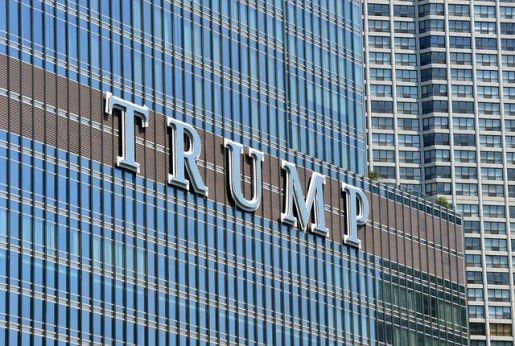
As reported in the Wall Street Journal, President Trump had more than once expressed an interest in purchasing Greenland from Denmark, even going so far as to ask his staffers to investigate the possibility of making an offer to the Danish government, presumably during a planned meeting in early September with Denmark’s new Prime Minister Mette Frederiksen.
President Trump subsequently confirmed that he wanted to look into the possibility of purchasing Greenland, referring to the process as a ‘large real estate deal’, and going as far as to tweet a photoshopped image of a golden Trump Tower in the middle of Nuuk. For both the Greenlandic and the Danish government, as well as many international commentators, the situation was far less amusing. Greenland’s Foreign Minister, Ane Lone Bagger, stated that while Greenland was very much open for business, it is not for sale, and Prime Minister Frederiksen called the entire notion ‘absurd’, noting that, ‘Greenland is not Danish. Greenland belongs to Greenland. I strongly hope that this is not meant seriously.’ Similar sentiments were expressed by Greenlanders themselves.
Not only did Mr Trump’s musings about purchasing Greenland reflect a complete disregard for Greenland’s population (57,000 persons), but also demonstrated an archaic and condescending neo-colonialist viewpoint, as well as considerable ignorance of Greenland’s current political status. Greenland is a part of the Kingdom of Denmark, and was granted self-rule and the right to self-determination as of 2009. Greenland is simply not eligible to be ‘sold’ by Denmark.
The United States had previously expressed interest in purchasing Greenland, including in 1867, when Washington was in the process of procuring Alaska from what was then the Russian Empire and talk circulated about possibly adding Greenland (and Iceland) to the list of US acquisitions in the far north. That plan was unsuccessful, but the administration of Harry S. Truman tried again in 1946 with an offer of US$100 million in gold in exchange for Greenland, only for Washington to be rebuffed. However, the United States did negotiate rights shortly afterwards to use Greenland to conduct military operations to counter the rising threat from the Soviet Union, and the US Air Force maintains a base at Thule in Greenland’s far north.

Mr Trump’s reaction to the Danish government’s dismissal of the Greenland purchase idea was the very definition of sour grapes. Not only did he abruptly cancel an upcoming Copenhagen meeting, but he also criticised Prime Minister Frederiksen’s views about the absurdity of purchasing Greenland as ‘nasty’ and suggested that she had offended the whole of the United States. He then subsequently tweeted that Denmark’s financial contribution to NATO was insufficient, reinforcing his longstanding views of the organisation as being unfair to US interests.
While it remains to be seen whether this situation could turn into a serious diplomatic rift, the affair is still more proof that the Arctic policy chasm between the United States and the other Arctic governments may be widening, as already evidenced by the aftershocks of US Secretary of State Mike Pompeo’s pugnacious and poorly received speech at the Arctic Council Ministerial Meeting in Rovaniemi in May of this year, as well as the considerable differences between Washington and the other seven Arctic governments regarding the urgency of the effects of climate change in the region. This week, a Nordic Prime Ministers’ Meeting in Reykjavík successfully concluded with a joint statement on sustainable development and the implementation of the 2015 Paris Agreement on the environment. As well, Icelandic Prime Minister Katrín Jakobsdóttir recently confirmed that she would not meet with US Vice President Mike Pence when he visits Reykjavík next month.
Clearly, the ‘buy Greenland’ fiasco has also underscored the degree to which Greenland, and indeed the Arctic as a whole, has assumed a much greater strategic concern to many states, including the US. As Greenland continues to ponder its political future, another important factor may be its ability to successfully navigate regional affairs at a time when the Arctic is under more scrutiny than it has been for decades.
Addendum: Icelandic Prime Minister Katrín Jakobsdóttir subsequently did meet with Mr Pence during his tour of Iceland, however the visit was controversial due to both the large size of the Vice-President’s security detail, as well as remarks he made to reporters suggesting that the Icelandic government had declined to join China’s Belt and Road trade initiative which were later disputed.